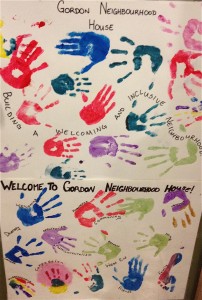Taking a course at UBC on the topic of immigration has made me reflect a lot on my own personal story of movement through place. I was born on Vancouver Island. While I have travelled plenty, I now call the city of Vancouver my home. Because the only two places I have ever called home are relatively close together, I had never been able to imagine myself in the shoes of an immigrant. I had only ever conceived of migration as permanent movements across vast distances and international borders. As I spend time in the classroom and at my fieldsite at the West End’s Gordon Neighbourhood House (GNH), conversations and observations have brought my attention away from statistics and maps, and into the human experience of migration. As people leave behind the places that they once called home, they must find new ways to belong in a foreign environment.
I arrived in Vancouver in 2009, knowing close to no one in the city. It was exciting, but it was not immediately “home”. Three years later, Vancouver is now more home to me than Vancouver Island, where I spent the first 18 years of my life. In fact, more so than ever before, I feel as though I comfortably belong to a particular community of people: UBC. Although I have never spoken a word to the vast majority of the tens of thousands of its students and staff, UBC feels like my home. When I arrived at my fieldsite at GNH, I saw a newspaper clipping in which one of the mothers who participates at the Weekend Family Place program described the warm community amongst the members who bring their children there every Saturday evening. Alongside my own experience of community at UBC, this made me ask: What makes a community, and how can that community in turn create home? In thinking about this question, an idea by Arjun Appadurai came to mind.
Appadurai identifies “the work of the imagination as a constitutive feature of modern subjectivity” (3). While Appadurai focuses his analysis on the role of electronic mass media in facilitating shared imagination, I began to see his idea of community formation through collective imagination at work in both my fieldsite and in my personal life. Communities are formed when “a group…begins to imagine and feel things together” (8). As I observed the families and their children at GNH eating dinner, playing with toys, and sharing tips on raising young kids, the sense of community grew increasingly apparent. When I asked one of the mothers what it is that makes the group so close, she explains, “I’ve been coming here for years. We eat dinner together and chat every week”. Nowadays, she says she cannot walk through the West End with her two sons without getting waves and greetings from other kids. She does not know who they are, but her children do. “It’s great!” she laughs. Another mother explains to me, “I cannot imagine this program ending. It has become such a big part of our lives!”
Community is fostered in part through shared experiences. It is not restricted to any particular setting, nor is it dependent upon a certain type of relationship. Through imagination and shared feelings, individuals are brought together. As one of my informants from GNH told me, “Home is a place that you feel loved…[and] where you are safe and secure.” As people move from their birthplaces, home takes on a multitude of meanings for different people, and it is fostered through the connections felt at communities like GNH and UBC.
Works Cited:
Appadurai, Arjun
1996 Modernity at Large: Cultural Dimensions of Globalization, pp.1-22.
Malkki, Liisa
1992 National Geographic: The Rooting of Peoples and the Territorialization of National Identity among Scholars and Refugees. Cultural Anthropology pp.24-44.




